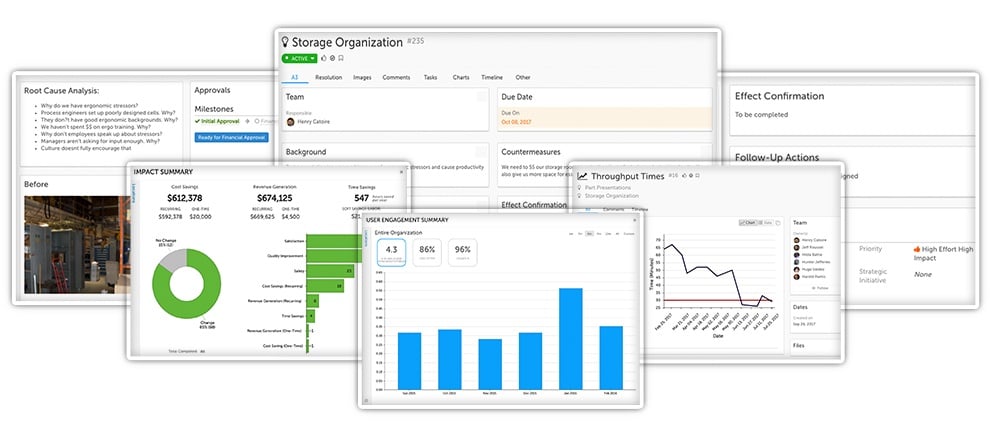
The idea of standard work originated in the manufacturing sector with the observations of early industrial engineers like Frederick W. Taylor, and is the practice of setting, communicating, following, and improving standards.
Establishing standard work begins with creating, clarifying, and sharing information about the most efficient method to perform a task that is currently known with everyone performing that process. Once this information has been shared, everyone practices this standard consistently so that the work is done the best way every time. This is where continuous improvement comes into play; standard work isn't a "set it and forget it" process, announced once and then permanently unchanging. Instead, everyone should work to improve the standard and share new best practices as they're discovered.
Standard work creates stability and consistency within a continuous improvement system by providing the baseline upon which a process sits. This way, your team isn't constantly reinventing the wheel.
Of course, not all work lends itself to standardization. So how do you know what should be standardized?
When deciding if standard work is needed for a job, staff should ask themselves why the steps in the process would benefit from consistency and/or documentation. If the answer is that they wouldn’t, standard work isn’t going to be helpful in that situation.
The success of standard work lies in the documentation of the process. If the point of standard work is to get everyone performing a task to complete it in the most efficient, safe, and effective manner, getting the documentation correct is critical to their success.
Elements to cover in your standard work documentation may include:
For more information about the essential elements of standard work, read this.
There are many reasons that standard work is important; the question should be "why am I not implementing standard work?" rather than "why should I?" From increased employee engagement and happiness to the production of higher-quality goods and services, standard work makes your business more successful in every measure.
Here are some of the many benefits of standard work:
For more information on the benefits of standard work, read this and this.
Standard work is straightforward, but there are a surprising number of ways to mess it up. I blame some of that on the name.
Standard work is an accurate description of what it is, but I think the name gives some people the sense that the Standard never changes and that employees should blindly follow it without comment or complaint.
Nothing could be further from the truth.
Standard work is the baseline or “floor” for improvement, not the ceiling. Ignoring this notion leads to a bunch of big mistakes. Here are some of the worst ones.
The Standard work is not a process overview. In order to be effective, it needs to break each step down into its smallest task. Only this level of granularity will eliminate variation. That said, the document should be kept simple and easy to understand. Include pictures, diagrams, and other artifacts when needed.
For more common mistakes with standard work, read this post on the KaiNexus blog.
DO engage the employees who actually do the work in the standardized work development process. Engineers and other outsiders may certainly be involved in the process, but the most important input comes from the frontline employees.
DO document the existing process, but keep an open mind and look for opportunities for improvement.
DO keep standardized work as simple as possible, breaking each task into its smallest steps. Paying attention to the smallest steps can help prevent variation.
DO document the process to an appropriate degree of detail.
DO make sure that documentation is easy to understand. The inclusion of diagrams, examples or other visual materials will help with this.
DO be sure that your standard work documentation is clearly displayed in the workplace, rather than being hidden in a binder or a computer.
DO provide a structured methodology for improving the process.
DON’T just document the current best practices without looking for opportunities to improve them.
DON’T think about standardized work created as a one-time event; it should be continually refined over time.
DON’T write the document in a way that is overly rigid, given the situation. Standardized work is not meant to be a substitute for thinking and judgment when the work or customer needs to call for it.
DON’T change procedures or processes without updating the standardized work. Doing so will cancel out the positive impact of standardized work.
DON’T create a complex procedure for changing standardized work. If the process is too complicated, people will avoid making any such changes.
DON’T allow unnecessary variation from the standardized work. If the standardized work truly defines the best practice, it should be performed the same way every time and performed the same way by other people. Otherwise, it should be changed.
For more information about what standard work is NOT, read this.
Copyright © 2025
Privacy Policy